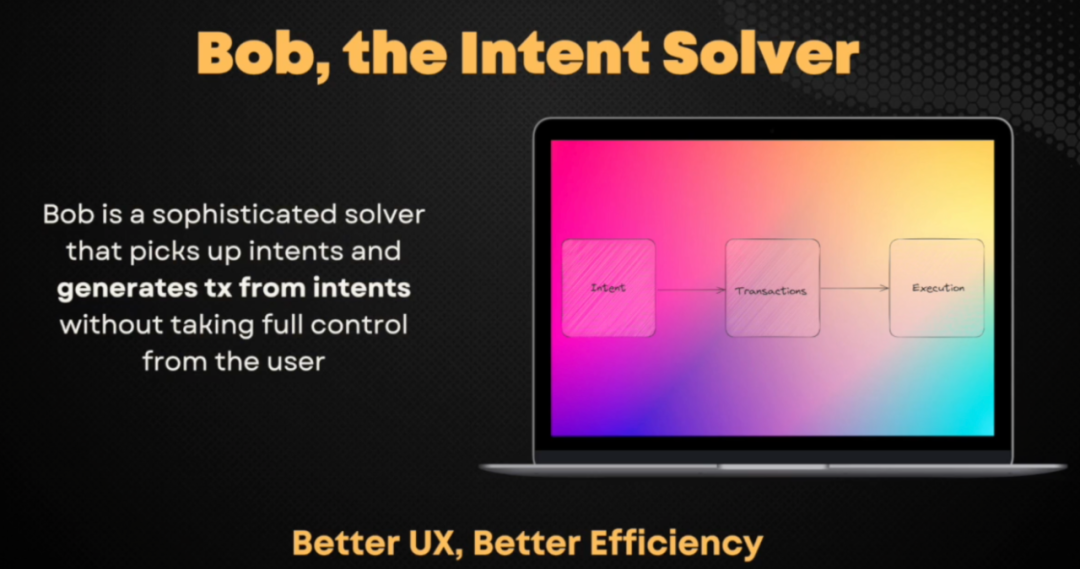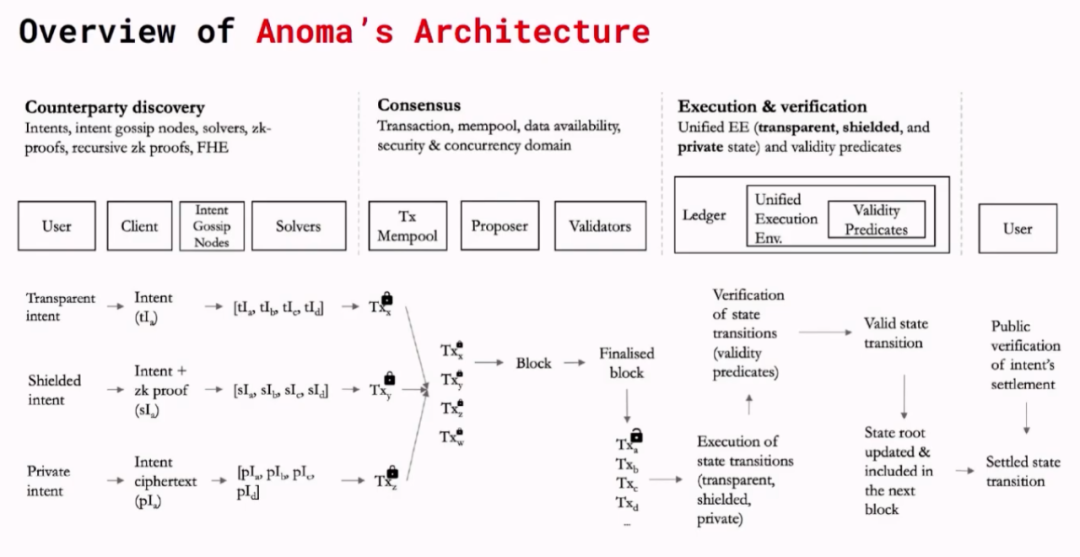Imagine this scenario: If you have 1000 USDT on the Ethereum mainnet and want to buy $OP on the Optimism Layer 2 network’s DEX, what should you do?
First, you need to choose a wallet that supports Optimism and add the corresponding network settings. Then, through a secure cross-chain bridge, you can bridge 1000 USDT and some ETH for gas fees to Optimism. After that, you can connect your wallet to the corresponding DEX and execute the transaction. The whole process, although intuitive, involves multiple interactions and waiting for confirmations, as well as potential network fees and transaction slippage, among other uncertainties. For blockchain beginners, each step can be a challenge, which also limits the widespread adoption of blockchain applications. So, can we simplify the complexity of on-chain interactions to the same level as operating on a centralized exchange (CEX)?
Intent-centric, as the name suggests, focuses on the intention rather than the process, unlike the previous scenario. Users only need to issue the command “I want to buy $OP on Optimism” and sign it. The Intent-centric protocol will collaborate with third parties to complete all necessary steps, thereby lowering the barrier to entry and providing users with a seamless experience similar to Cefi (Centralized Finance).
There are currently several projects exploring intent-centric approaches.
- Interview with the Chairman of Cypher Capital The Cryptocurrency Cycle is an External Factor, Cultivating Inner Strength is the Way to Success
- Against the trend, what new tricks will the social application friend.tech bring to NFT?
- Financing Weekly Report | 18 Public Financing Events; Layer 1 blockchain operator ZetaChain completes $27 million equity financing, with participation from Blockchain.com, etc.
Bob the Solver
Bob the Solver is an infrastructure based on intent-based transactions that can be integrated into account abstract wallets and decentralized applications. It performed well in the ETHGlobal LianGuairis hackathon and won the Best Use Case award from 1inch. It consists of two parts:
Solver: The Solver is equipped with machine learning (ML) to identify user intentions and classify them, planning the optimal path to realize the intention. Once the path is determined, the Solver constructs the necessary transactions to fulfill the user’s intention and forwards them to the account abstract wallet.
Account Abstract Wallet (AA Wallet): Responsible for executing transactions, composed of a bundler and LianGuaiymaster. The bundler receives and plans the transactions sent by the Solver, while LianGuaiymaster manages the gas fees associated with these transactions.

Anoma
Anoma is an intent-centric privacy protection protocol used for decentralized trade partner discovery, parsing, and multi-chain atomic settlement. The core process includes the following steps:
-
User Interaction: Users can send transparent, private, or protected intentions to Anoma’s intent gossip network (P2P network layer).
-
Intent Collection and Matching: Solvers (can be searchers or other roles) in the network collect intentions and perform balanced state transitions to achieve trade partner matching.
-
Transaction Processing: Matched transactions are submitted to the encrypted mempool. Validators send the proposer-packed blocks to the execution layer, complete execution and verify validity, and finally update the state root.
Anoma’s execution layer is built on Taiga, which is a zk-circuit based on Halo2, enabling Anoma to deploy Ethereum zk-rollups and share some security properties of Ethereum.
In addition to zk-rollup, Anoma can also be used for fully decentralized development of op-rollup, NFT Marketplace, Dex, etc. It provides a simplified way to build and operate these applications while protecting user privacy and security.

Essential
Essential focuses on building intent-based infrastructure and tools to address MEV (Miner Extractable Value) issues. Its core goal is to reduce the negative externalities caused by MEV, enabling users to achieve their intentions at the lowest cost. Essential plans to establish a solver network to capture user intentions and compete to find the best solutions, transforming profit-seeking searchers into solvers seeking the best solutions for users.
To achieve this goal, Essential is developing a series of products:
Domain-Specific Language (DSL) for intent expression: A standardized intent language that makes it easier for solvers to understand and reason about user intentions.
Intent-centric account abstraction standards for Ethereum and EVM: Solvers need permission to perform on-chain operations, thus requiring account abstraction. The new standard will introduce ERC-4337, allowing solvers to construct valid transactions to fulfill intentions.
Modular intent layer: To address the inevitable design sacrifices when integrating intent-centric architecture with the underlying compatibility. Its benefits include:
-
Simplified architecture: Intent-only approach abandons the concept of transactions, allowing solvers to focus on providing solutions without understanding the dependencies between intentions and transactions;
-
Order flow aggregation: All orders are distributed through the same solver network, ensuring transparency and optimizing user results through multiple liquidity sources;
-
MEV resistance: Incentivizes solvers to return more value to users in order to provide the best results;
-
Modular design: Allows deployment of protocols in multiple stacks and ecosystems, facilitating cross-chain intent execution.
Flashbots Suave
It is worth mentioning that Flashbots’ suave is specifically focused on intent-centric cross-chain MEV extraction. As mentioned earlier, suave’s architecture revolves around user transaction preferences, consisting of expressing, executing, and settling preferences. Here, “preferences” can be understood as user intentions with conditions and constraints. The executors of these intentions compete and return a portion of the MEV revenue to the users to maximize their interests.
Last month, Flashbots launched MEVM, which provides new precompiles for MEV, allowing any centralized MEV infrastructure to be transformed into smart contracts on decentralized blockchains. Additionally, MEVM provides privacy and efficiency by moving the computation of sensitive data to off-chain execution nodes. MEVM will greatly enrich the suave chain ecosystem, bringing more order flow, better results for users, and higher-quality blocks for proposers.
What opportunities does Intent-centric have in the future?
Integration of Intent Language and AI: In most cases, the user’s intent is complex and the intent expression is insufficient, which may make it difficult for the solver to understand the intent and plan the optimal solution path. AI can be used to more accurately identify user intent, for example, by using machine learning to build intent recognition models that infer potential goals and needs based on the user’s transaction request source, transaction data, etc.
Third-party Execution Layer: After the solver identifies the intent, it will package the transaction process to a third-party execution layer. The execution process often involves complex transaction flows and multiple participants. A key factor in achieving user intent is a third-party execution layer that can respond quickly, accurately process transaction flows, and is secure and stable. However, be vigilant about centralization issues and DOS attacks on the third-party execution layer.
Mass adoption of DeFi: In fact, there are already DeFi projects that adopt intent-centric, such as Cowswap, 1inch Fusion, UniswapX, etc. Cowswap has launched Cow Hooks for intent-based AMM swaps; UniswapX allows users to sign intents, and the solver executes orders off-chain and settles on-chain. With the mass adoption of intent-centric in the DeFi field in the future, it is possible to improve capital efficiency and provide liquidity.
Development of Full-chain Games: All the game logic and data of full-chain games are stored on-chain in the form of smart contracts. Due to limitations such as blockchain speed and scalability, it is currently unable to support games with complex strategies and stunning graphics. Intent-centric can reduce the complexity of player operations in full-chain games. Players only need to issue intent commands and sign them to complete game operations, instead of approving and signing each step of intent operations, improving player game experience.
As Web3 continues to evolve, user experience and interaction efficiency are gradually becoming the focus. Intent-centric enables us to build and operate complex systems in a completely new way, and we look forward to a more user-friendly, efficient, and transparent decentralized world.
Reference links:
https://medium.com/anomanetwork/an-overview-of-anoma-s-architecture-26b72e8c9be5
https://blog.essential.builders/introducing-essential/
https://writings.flashbots.net/mevm-suave-centauri-and-beyond
Like what you're reading? Subscribe to our top stories.
We will continue to update Gambling Chain; if you have any questions or suggestions, please contact us!